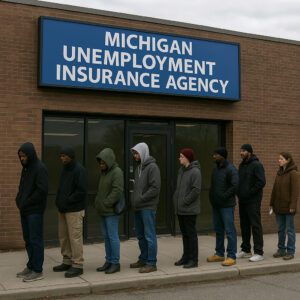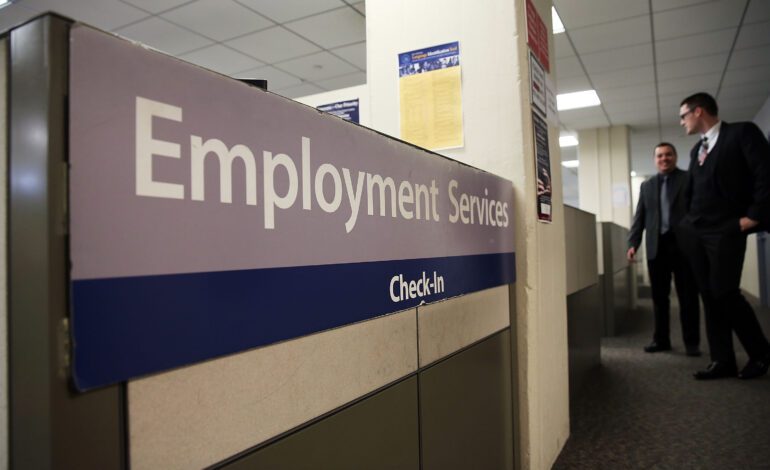LANSING – Amid growing fears of an economic slowdown triggered by the tariff war led by President Trump’s administration, Michigan has recorded the largest year-over-year increase in unemployment among all 50 U.S. states, registering one of the worst unemployment rates in the nation, according to the latest data from the U.S. Bureau of Labor Statistics for February 2025.
Figures released on Friday, March 28, show that Michigan’s unemployment rate rose slightly from 5.3 percent in January to 5.4 percent in February. However, compared to February 2024, the jump was much steeper — rising by 1.4 percentage points, from 4 percent to 5.4 percent — marking the highest annual increase in unemployment of any state.
Experts link the rise in unemployment to Michigan’s long-term structural economic challenges, along with fears surrounding the impact of federal tariff policies.
John Walsh, president of the Michigan Manufacturers Association, said he had heard informal reports from multiple companies — especially in the automotive industry — that were hesitant to fill job vacancies due to uncertainty over the effects of Trump’s planned tariffs. He added, however, that “there is still some optimism among businesses.”
The second-largest annual rise in unemployment was recorded in Mississippi, where the rate increased by 1 percentage point, from 2.8 percent to 3.8 percent. Nationally, the U.S. unemployment rate for February stood at 4.1 percent.
Michigan was tied with California for the second-highest unemployment rate in the country at 5.4 percent, while Nevada led the nation at 5.8 percent, according to the Bureau of Labor Statistics.
All four of Michigan’s neighboring states had lower unemployment rates: Illinois: 4.8 percent, Ohio: 4.7 percent, Indiana: 4.3 percent and Wisconsin: 3.2 percent.
Michigan’s heavy dependence on the automotive sector, more than any other U.S. state, means that slowdowns in production and layoffs in this key industry have an outsized impact on the broader state economy.
Despite these concerns, some analysts are hopeful that Trump’s new tariffs on all imported cars may eventually stimulate domestic vehicle production, which could benefit American carmakers and suppliers.
The tariffs went into effect on the same day that Michigan announced an increase of nearly 70,000 unemployed people in February, bringing the total number of unemployed to about 274,000, up from 204,000 in February 2024.

Labor market and economic outlook
Patrick L. Anderson, founder of the Anderson Economic Group based in East Lansing, stated that not all of the unemployment rise can be attributed to Trump, as he had been in office for only one month as of February.
Anderson also noted that inflation, which has hurt tourism and manufacturing, remains a pressing issue, and that Michigan’s persistently slow population growth continues to drag down the state’s long-term economic outlook.
According to the U.S. Census Bureau, Michigan reached a historic population high of 10.1 million in 2024, yet its growth rate lags behind most other states. As a result, Michigan has lost several congressional seats over the past three decades.
In fact, since 2000, Michigan has ranked 49th out of 50 states in terms of population growth, ahead of only West Virginia.
A report published on February 28, before Trump’s latest tariff announcements, by economists from the University of Michigan noted a marked slowdown in job growth in 2024. Michigan’s economy added only 38,100 new jobs that year, compared to 80,600 in 2023.
Gabriel Ehrlich, a quantitative economist at the University of Michigan, said the volatile labor market performance over the last two years makes it difficult to identify future trends. He warned that “the outlook could grow murkier due to the unpredictable direction of federal policy.”
Despite forecasting a continued slowdown, Ehrlich does not predict a sharp recession in Michigan’s economy.
University of Michigan economists estimate the state will add 30,200 jobs this year, followed by 18,500 jobs in 2026. Although growth is expected to remain sluggish, they forecast that unemployment will gradually decline to 4.8 percent by the end of 2026.
Despite the challenges in manufacturing, the university’s analysts are cautiously optimistic, pointing to growth potential in other key sectors such as health care, entertainment, and hospitality, which are expected to expand even amid stagnation elsewhere.
Manufacturing under pressure
The Anderson Economic Group warned that auto workers across North America face increasing risks due to tariff hikes. Michigan is expected to be the most affected state, particularly by tariffs on steel and aluminum, both critical to auto manufacturing.
Trump’s tariff increases, announced in February, include a 25 percent hike on steel and aluminum imports, and are projected to eliminate 2,300 industrial jobs in Michigan by 2026, according to University of Michigan experts. However, they caution that this projection could change significantly if Trump’s policies succeed in reshoring manufacturing jobs to the U.S., including in Michigan.
In 2024 alone, job losses in the manufacturing sector were a major factor in Michigan’s nation-leading rise in unemployment, pushing the state’s jobless rate to 5.4 percent by February 2025.
Compared to February 2024, Michigan’s manufacturing employment dropped by 11,000 jobs, from 612,000 to 601,000, a decline of 1.8 percent — the sharpest among the 12 sectors tracked monthly by the state.
However, between January and February, Michigan’s manufacturing sector added about 6,000 jobs, though this growth was not enough to offset prior losses or job cuts in other areas, including private education, health services, entertainment and hospitality
Each of these sectors lost around 3,000 jobs during the same period.






Leave a Reply